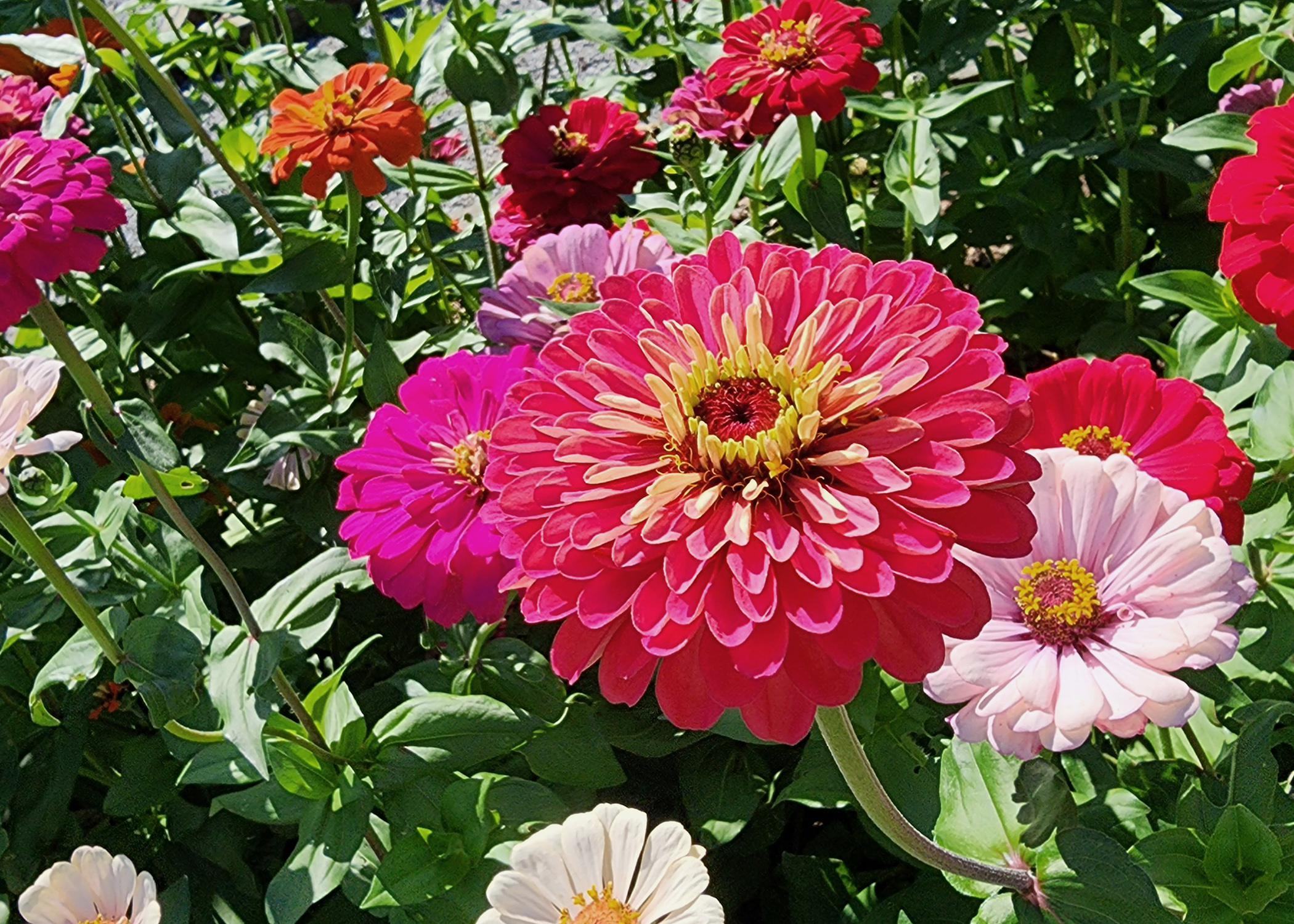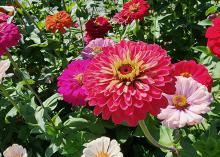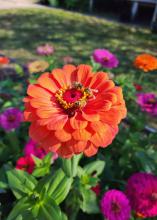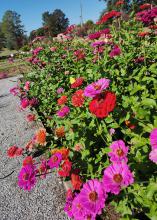Information Possibly Outdated
The information presented on this page was originally released on November 7, 2022. It may not be outdated, but please search our site for more current information. If you plan to quote or reference this information in a publication, please check with the Extension specialist or author before proceeding.
Giant Dahlia zinnias are great fall flowers
I’ve always enjoyed the fall season in the landscape and garden. I find the moderating temperatures refreshing, which helps me get my second wind when taking care of gardening chores.
Many of our summer annuals seem to feel the same way about the reinvigorating fall weather. In fact, I think these summer annuals actually look their best in the fall.
There is no better example of this than zinnias grown in the fall.
I was visiting the trial gardens at the Mississippi State University South Mississippi Branch Experiment Station in Poplarville this week, and I was blown away by the zinnia plantings in front of the station’s office building. There is a colorful mass planting -- probably close to 200 square feet -- of the Zinnia elegans variety, Giant Dahlia Mix.
If you like to have zinnias to cut for displaying, these are an absolute must for the cutting garden.
Giant Dahlia zinnias are similar in size -- 40 to 50 inches tall -- and color palette as Benary’s Giant zinnias, another great garden favorite of mine. Their single, semidouble and double flowers are huge, anywhere from 4 to 6 inches in diameter. Some of the double flowers were the size and shape of baseballs.
Plus, you can’t beat the yellow, rose, scarlet, green, orange, pink, red, purple and coral mix of brilliant colors.
I worked on a locally produced cut flower project several years ago, and we concentrated on growing the Giant Dahlia Mix because of its extremely long stems that are perfect for growing as cut flowers.
In Poplarville, I was also amazed at the number of pollinators attracted to the planting. Several kinds of butterflies and skippers gave the illusion that the planting was in constant motion. I was surprised seeing the number of honeybees enjoying a fall snack, with many flowers hosting two, three or more honeybees on them at the same time.
Usually at this time of year, the various cutting zinnia selections all suffer powdery mildew and other fungal spots on the foliage, but these plants were almost pristine. This quality growth can be attributed to September and October being extremely dry months, and environmental conditions were not conducive to foliar disease problems.
All zinnia elegans selections benefit from deadheading the fading flowers. This isn’t a problem for these large-flowering selections, because I like bringing in fresh cut flowers and displaying them in nice vases. The constant cutting encourages more flower production.
So, make an entry on your 2023 gardening calendar to plant late-summer zinnias that you will enjoy next fall.





